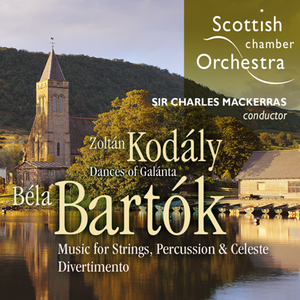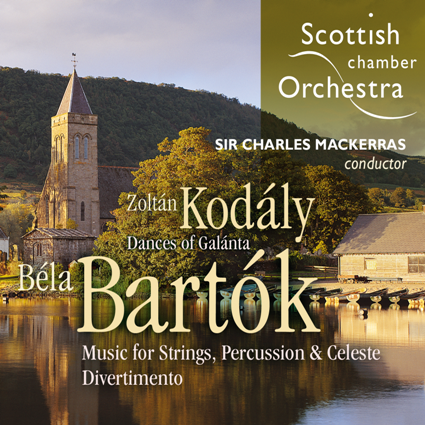Bartok & Kodaly - Music for Strings, Percussion and Celeste, Divertimento - Mackerras · SCO
FLAC 96kHz / 24bit (Studio Master) | Stereo | Linn Records CKD 234 [2004] | 1.42 GB | 3% RAR | MU, RS
FLAC 96kHz / 24bit (Studio Master) | Stereo | Linn Records CKD 234 [2004] | 1.42 GB | 3% RAR | MU, RS
The Dances of Galánta, inspired by the eponymous small market town in western Hungary where Kodály spent seven childhood years, is probably his most popular composition. At the end of the nineteenth century a famous Rom band played there, and their sonorities no doubt impressed themselves on him. Yet his main source for this 1933 composition was a Viennese publication containing some music ‘after several gipsies from Galánta’. This music was in the verbunkos (recruiting dance) tradition most widely cultivated by Romani bands from the eighteenth century on. Written for the 80th anniversary of the Budapest Philharmonic Society, The Dances of Galánta are characterized by rondo-form construction and a brilliant, Debussy-influenced orchestration that captures the spirit of the original.
Béla Bartók (1881-1945) wrote his Music for Strings, Percussion and Celeste (1936), Sonata for Two Pianos and Percussion (1937) and the Divertimento (1939) just before World War 2 at a time of gathering gloom in Europe. The first of these pieces, composed in the summer of 1936 for the Swiss conductor Paul Sacher and the Basle Chamber Orchestra on its tenth anniversary, is rightly regarded as the most significant of his chamber orchestra works, displaying as it does Bartók’s highly-developed techniques of variation and an amazing economy of means. The premiere took place in Basle on 21 January 1937. The instrumentation is both unusual and challenging: a double string orchestra with celeste, harp, piano, xylophone, kettledrums and a miscellaneous collection of percussion under the control of one player. The common title of the work in English, however, Music for Strings, Percussion and Celeste, is somewhat misleading since the word in the original German title, ‘Saiteninstrumente’, refers to instruments that have strings but which are not necessarily bowed, such as the harp, and while technically the piano is a percussion instrument it operates through the striking of strings by hammers. Bartók himself only finalised the title as he evolved the conception of the scoring. The placement of the orchestra on the stage has the two groups of string players separated by the other instruments which are placed centrally, and this spatial relationship gives a sense of three-dimensionality in performance. Bartók uses the string instruments both antiphonally and in combination, with and without the percussion instruments, all of which are sounded in original and imaginative ways. This recording uses a smaller orchestra than is customary, one specifically allowed by Bartók in a letter of 1936 to Max Adam, in which he mentions that Paul Sacher had 30 string players available and that this was sufficient. The only proviso was that the two string orchestras should have equal numbers. Comparable to Sacher’s original forces, the present recording uses 34 string players who are equally divided into five first violins, four second violins, three violas, three cellos and two double basses for each orchestra.
Tracklist
[1] Dances of Galánta
[2] Music for Strings, Percussion and Celeste Andante tranquillo
[3] Music for Strings, Percussion and Celeste Allegro
[4] Music for Strings, Percussion and Celeste Adagio
[5] Music for Strings, Percussion and Celeste Allegro molto
[6] Divertimento Allegro non troppo
[7] Divertimento Molto adagio
[8] Divertimento Allegro assai



